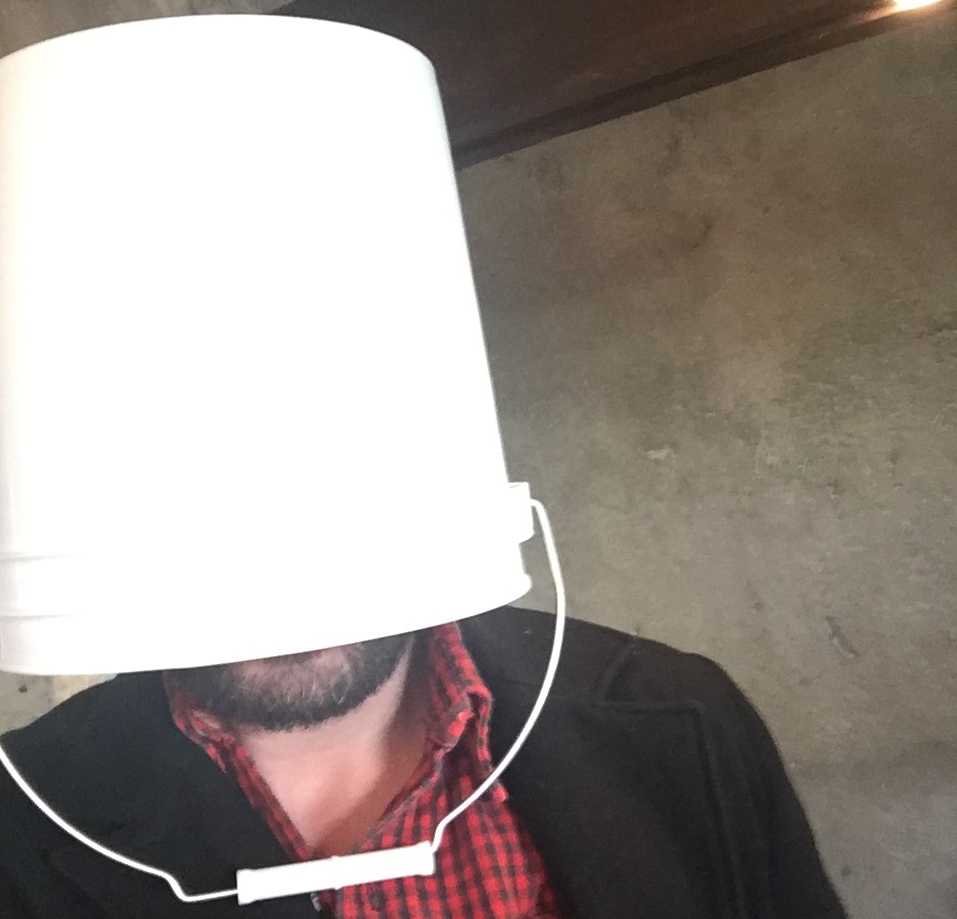Erwin Wurm at The MAK Center
by Tucker Neel
Artillery Magazine Online. Feb 24, 2016.
Erwin Wurm’s “One Minute Sculptures” at The MAK Center is crammed with critically disruptive content, though at first glance there’s not much to look at. In a literalized enactment of the Duchampian observation that “the viewer completes the art,” visitors to Wurm’s show are compelled to activate the works on display with their bodies for one minute. The un-activated work consists of everyday objects, stuff easily purchased in any city, on individual pedestals lit from above, a presentation designed to frame each thing as a work of art. Wurm uses these conspicuous banalities to inspire his viewers/performers to focus on the strangeness latent in the non-art objects we engage with every day, and in doing so he re-frames how we understand their symbolic and real uses. One piece has you put a sneaker on your head. Another has you stand like a flamingo while propping a drumstick between the back of your heel and the back of your knee. Another has you wrap your head in a pink stuffed animal. Each action is ridiculous both to perform and witness. To write this review, I did my duty and interacted with each work. I ended up with a bucket on my head and my mind thoroughly blown.
Wurm has been exhibiting these works for almost 30 years in major art institutions around the world, and much has been made about his ability to blur the lines between sculpture and performance. But in the world-famous Kings Road house designed by architect R.M. Schindler to embody idealist notions of communal living, Wurm’s one minute sculptures inject a funny and biting critique into a place many fans of architecture treat like a holy site.
Back to the bucket on my head. I was urged to put it on by Twilight (all works 2016), Wurm’s most compelling work in the show. It consists of a rough-hewn DIY wooden table and lamp combo topped with a shade made from another overturned plastic bucket, emblazoned with the logo for “Do it Best Quality Paints.” I can’t help but see this bucket / lampshade as a nod to painting’s absence, not just in this show, but to Wurm’s particular artistic practice. Twilight is next to a table and chairs that are part of the house, designed by Schindler himself, and a sign asks visitors not to sit on the revered architect’s stuff. The juxtaposition of Wurm’s interactive, cobbled-together furniture and Schindler’s preserved specimens creates a tongue-in-cheek critique of “use value,” investigating what a chair actually is if you can’t sit in it. Additionally the work, with its DIY, almost Dwell magazine attitude creates a space for considering the legacy and fetishization of mid-century modernism, the way its corresponding aesthetic has become more a lifestyle brand than the instance of radical politics made real. I may have looked silly with that bucket on my head, but putting it on helped me see Wurm’s work, and the MAK Center, and art in an inspiringly new way.


©2024 Tucker Neel. All rights reserved.